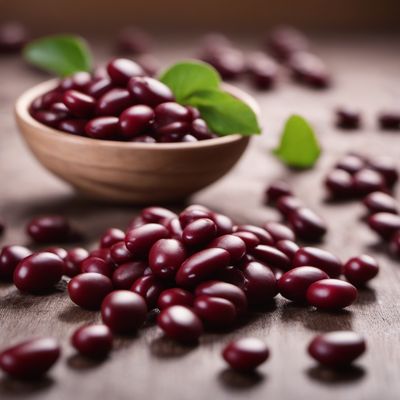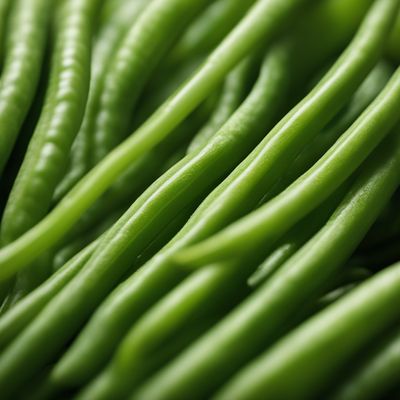
Ingredient
Stink beans (without pods)
The Pungent Delicacy: Stink Beans Unleashed
Stink beans are long, flat beans with a vibrant green color and a bumpy texture. They have a pungent smell that is often described as a combination of garlic and onions. When cooked, they develop a tender yet slightly crunchy texture. Stink beans are known for their ability to absorb flavors, making them a popular choice in stir-fries, curries, and sambals.
Origins and history
Stink beans have a long history in Southeast Asian cuisine, particularly in countries like Malaysia, Indonesia, and Thailand. They have been used for centuries and are deeply rooted in the culinary traditions of these regions. Stink beans are believed to have originated in Malaysia and have since spread to other parts of Southeast Asia. They are highly valued for their unique taste and are often considered a delicacy.
Nutritional information
Stink beans are a good source of dietary fiber, protein, and various vitamins and minerals. They are low in calories and fat, making them a healthy addition to meals. Additionally, they contain antioxidants that help protect the body against oxidative stress.
Allergens
There are no known allergens associated with stink beans.
How to select
When selecting stink beans, look for fresh, vibrant green beans without any signs of wilting or discoloration. The beans should be firm to the touch and free from blemishes. Avoid beans that have a strong, unpleasant odor, as this may indicate spoilage.
Storage recommendations
To maintain the freshness of stink beans, store them in a perforated plastic bag or airtight container in the refrigerator. They can be kept for up to a week, but it is best to consume them as soon as possible for optimal flavor and texture.
How to produce
Stink beans can be grown in tropical and subtropical regions. They thrive in warm climates with well-drained soil. To grow stink beans, plant the seeds in a sunny location and provide regular watering. The beans will typically be ready for harvest within 3 to 4 months.
Preparation tips
Before using stink beans, remove the outer skin if desired. To do this, blanch the beans in boiling water for a few minutes, then transfer them to an ice bath to cool. The skin can then be easily peeled off. Stink beans can be stir-fried, boiled, steamed, or added to curries and soups. They pair well with ingredients like shrimp, garlic, chili, and coconut milk.
Culinary uses
Stink beans are commonly used in Southeast Asian cuisines, particularly in dishes from Malaysia, Indonesia, and Thailand. They are often added to stir-fries, curries, sambals, and salads to provide a unique flavor and texture. Stink beans are also used in traditional dishes like sambal petai, a spicy chili paste with shrimp and stink beans.
Availability
Stink beans are commonly available in Southeast Asian countries such as Malaysia, Indonesia, Thailand, and Singapore. They can also be found in specialty Asian grocery stores or markets in other parts of the world.
More ingredients from this category » Browse all

Mung beans (without pods)
The Mighty Mung: Unlocking the Power of Mung Beans

Soyabeans (without pods)
The Mighty Bean: Unleashing the Power of Soyabeans

Azuki beans (without pods)
The Versatile Azuki Beans

Borlotti or other common beans (without pods)
The Versatile Legume: Borlotti Beans

Broad beans (without pods)
The Versatile Legume

Black gram (fresh seeds)
The Nutritional Powerhouse: Fresh Black Gram Seeds

Rice beans (without pods)
The Versatile Rice Bean

Mat bean (fresh seeds)
The Mighty Mat Bean: A Nutritional Powerhouse

Monantha vetches (without pods)
The Versatile Monantha Vetches

Tepary bean (fresh seeds)
The Resilient Legume

Yardlong beans (without pods)
The Versatile Legume

Vetches (without pods)
The Versatile Vetch